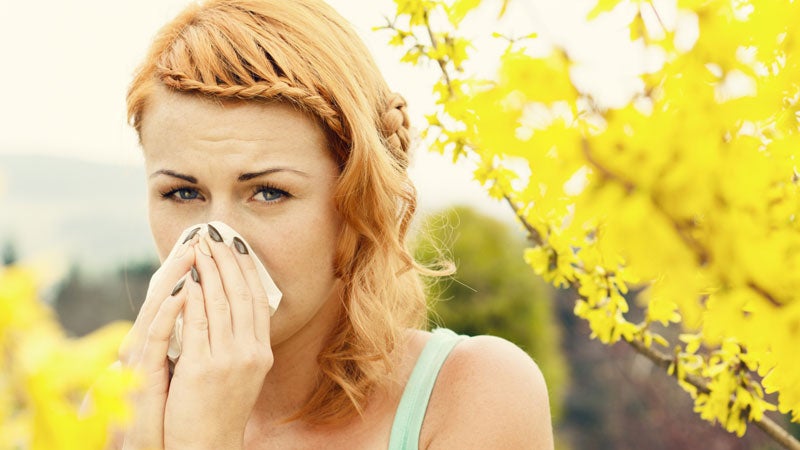You can’t win, can you: It’s finally warm enough to enjoy outdoor exercise, but now you’re inundated with itchy eyes, a runny nose, and sneezing fits that feel like a workout in themselves. Luckily, there’s plenty you can do to reduce your misery and feel like yourself again.
First, the easy stuff: Leave your shoes outside or in the front hallway after an outdoor workout, and change out of your clothes right away to avoid tracking pollen (the main source of spring allergies) into your home. Wearing sunglasses can also help keep wind-blown particles from irritating your eyes, says .
If itchy or gunky eyes are your main complaint, you can use an antihistamine eye drop (like Zatidor or Visine-A) before you head outdoors. For combined ocular and nasal symptoms, try an all-purpose antihistamine-plus-decongestant, like Zyrtec-D, Claritin-D, or Alegra-D; these are available over-the-counter and most formulas provide relief for 24 hours. Nasacort, an OTC nasal steroid spray, may work even better, says Caldwell, but needs to be used consistently, every day, for it to be effective.
Avoid nasal decongestant sprays like Afrin, except in emergencies. “They works fast, but they cause rebound effects; when the medicine wears off, your nasal tissues swell back up like balloon even worse than before,” says Caldwell. “If you’re all stuffed up before a race or a monumental hike, it can really help you out—but make sure you’re not using it on a regular basis.”
Sign up for ; on days when levels are exceptionally high, you might want to head to the gym instead of the park. And speaking of parks: Running through a city or residential neighborhood versus a wooded area won’t likely make much of a difference, says Caldwell, since tree pollen can spread for hundreds of miles through the air.
Bottom line: Try over-the-counter antihistamines or steroid nasal sprays, and consider indoor workouts on high-pollen days. If none of these remedies seem to help your symptoms, talk to your doctor about prescription options or regular allergy shots.


